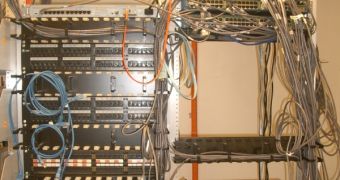A large number of networking-related brands have joined Nimbus earlier this year to form a new 10 Gigabit Ethernet Storage Alliance. Arastra, Force10 Networks, Fujitsu, Fulcrum Microsystems, Mellanox Technologies, Neterion, and NetXen have teamed up in order to deliver complete networking ecosystem comprised of adapter, switch, and storage devices.
The newly-formed alliance aims at increasing awareness and enterprise deployments of 10 Gigabit Ethernet, and set a new standard based on increased data transfer speeds and superior, more solid networking infrastructures for server virtualization.
"As long expected, 10GbE is now a viable platform for high performance storage networking. As server, network, and storage virtualization transform the way we build and operate datacenter infrastructure, 10GbE will become the unifying and strategic network," says Michael Peterson, President of Strategic Research Corporation.
The 10 Gb Ethernet Storage Alliance is comprised of both switch manufacturers (Arastra Inc, Force10 Networks Inc, Fulcrum Microsystems Inc, Fujitsu Microelectronics) and adapter manufacturers (Mellanox Technologies, Neterion and NetXen Inc). The new group plans to develop a multi-vendor ecosystem, in order to make 10 Gb Ethernet adoption available for small- and medium-sized business as well.
10 Gigabit Ethernet infrastructures are alleged to help enterprises reduce storage network infrastructure cost by 30-75 percent as compared with the 4Gb Fiber Channel. IT administration is also dramatically simplified through uniform management across the LAN, WAN, and storage network.
"10 Gigabit Ethernet brings versatility and simplicity to enterprises of all sizes through network consolidation, familiar management, more bandwidth without trunking, and multi-vendor interoperability," stated Thomas Isakovich, founder and CEO of Nimbus Data Systems.
The 10 Gb Ethernet standard is currently being adopted by large corporations only, given the fact that the existing technology is expensive and its deployment is a delicate task. However, it brings significant benefits over the 4Gb Fiber Channel technology., such as 2.5 times increased bandwidth and full support for iSCSI, NFS, CIFS, and emerging protocols like FCoE, iSER, and iWARP on a single network.

 14 DAY TRIAL //
14 DAY TRIAL //